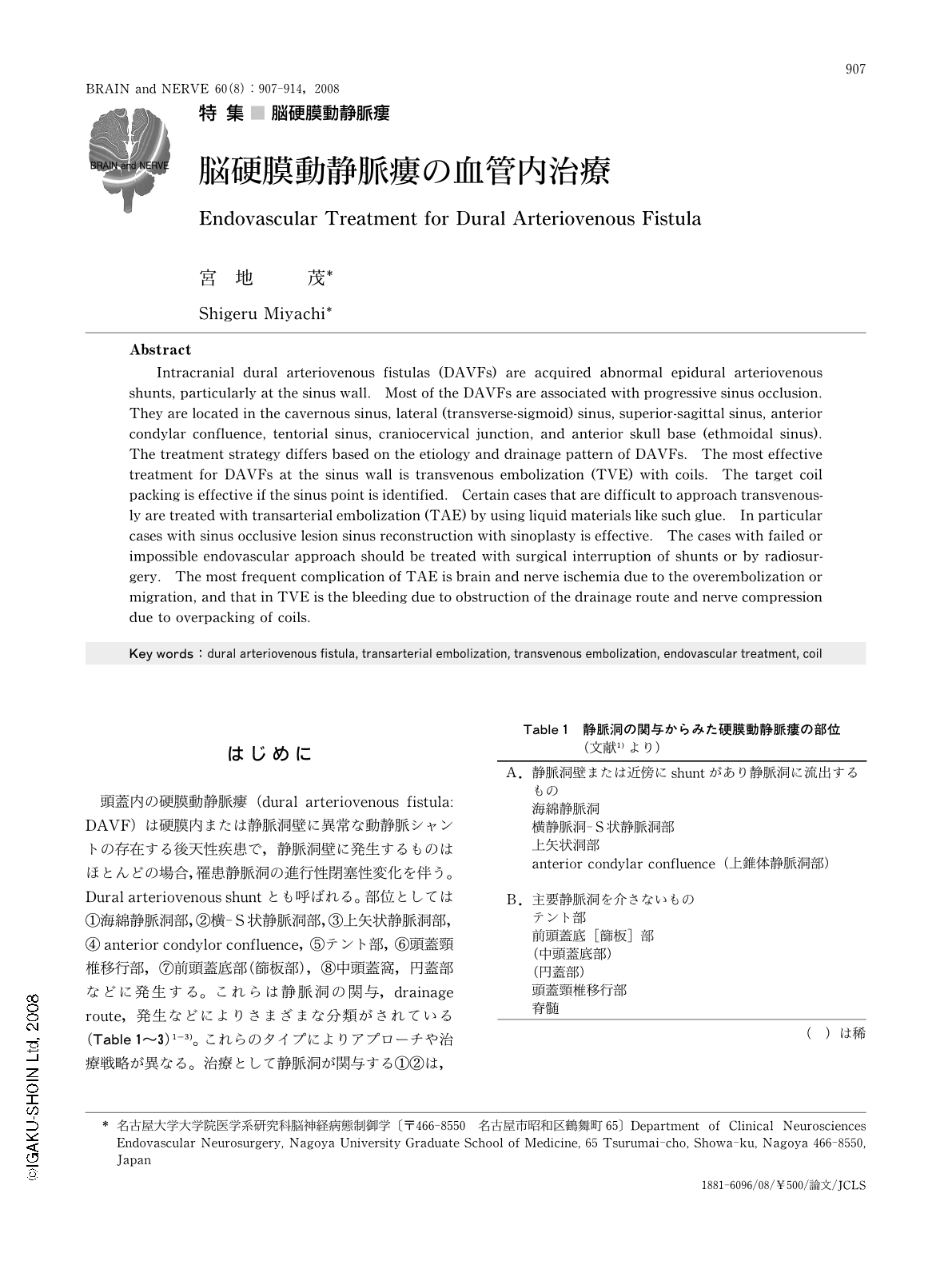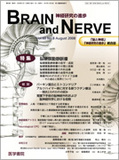Japanese
English
- 有料閲覧
- Abstract 文献概要
- 1ページ目 Look Inside
- 参考文献 Reference
はじめに
頭蓋内の硬膜動静脈瘻(dural arteriovenous fistula: DAVF)は硬膜内または静脈洞壁に異常な動静脈シャントの存在する後天性疾患で,静脈洞壁に発生するものはほとんどの場合,罹患静脈洞の進行性閉塞性変化を伴う。Dural arteriovenous shuntとも呼ばれる。部位としては①海綿静脈洞部,②横-S状静脈洞部,③上矢状静脈洞部,④anterior condylor confluence,⑤テント部,⑥頭蓋頸椎移行部,⑦前頭蓋底部(篩板部),⑧中頭蓋窩,円蓋部などに発生する。これらは静脈洞の関与,drainage route,発生などによりさまざまな分類がされている(Table1~3)1-3)。これらのタイプによりアプローチや治療戦略が異なる。治療として静脈洞が関与する①②は,静脈洞から独立したシャント部位〔dural vein: (parasinus)〕が同定されれば経静脈的塞栓術が根治的である。静脈洞閉塞が不可能な場合には経動脈的塞栓術を行う。液体塞栓物質を用いた根治的経動脈的塞栓術が有用な場合もあるが,不可能な場合には観血的シャント部閉塞を行う。アプローチが不可能な場合または遺残シャントについては,radiosurgeryが適用される。また閉塞・狭窄した静脈洞を拡張させる(sinoplasty)ことにより,順行性の導出路を確保できる場合もある。本稿ではDAVFに対する脳血管内治療の適用と方法について,各部位ごとに詳説する。
Abstract
Intracranial dural arteriovenous fistulas (DAVFs) are acquired abnormal epidural arteriovenous shunts, particularly at the sinus wall. Most of the DAVFs are associated with progressive sinus occlusion. They are located in the cavernous sinus, lateral (transverse-sigmoid) sinus, superior-sagittal sinus, anterior condylar confluence, tentorial sinus, craniocervical junction, and anterior skull base (ethmoidal sinus). The treatment strategy differs based on the etiology and drainage pattern of DAVFs. The most effective treatment for DAVFs at the sinus wall is transvenous embolization (TVE) with coils. The target coil packing is effective if the sinus point is identified. Certain cases that are difficult to approach transvenously are treated with transarterial embolization (TAE) by using liquid materials like such glue. In particular cases with sinus occlusive lesion sinus reconstruction with sinoplasty is effective. The cases with failed or impossible endovascular approach should be treated with surgical interruption of shunts or by radiosurgery. The most frequent complication of TAE is brain and nerve ischemia due to the overembolization or migration, and that in TVE is the bleeding due to obstruction of the drainage route and nerve compression due to overpacking of coils.

Copyright © 2008, Igaku-Shoin Ltd. All rights reserved.


